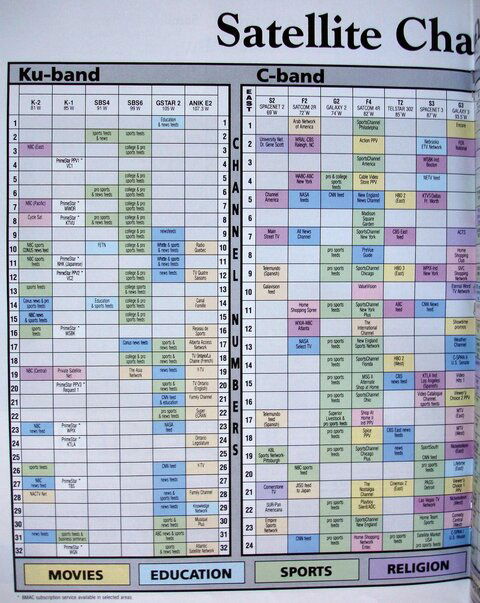Well after being happy that with only minimal tweaking, I got my Primestar relocated to where it can see AMC21, and being surprised that I was now getting the LPB DVB-S2 signal, plus another signal I hadn't been able to lock before, I seem to have lost LPB. :-(
I had been monitoring it for a couple days on both my Diamond and the TT-3200, and it was 98% solid on the Diamond, and 100% solid on the 3200, basically no errors.
Then, however, it got just a tad windy, and I noticed that on my Diamond, that the signal was going out periodically, just for a second or two. Then I remembered that I never tightened down the bolts on the Primestar, so I thought that perhaps the wind was moving it around. I was still getting error free reception on the 3200 BTW.
So I went outside, and did nothing more than tighten the bolts on the Primestar mount. Came back inside....... NO LPB ?#!#*%&^ I thought that perhaps the mount was changing elevation slightly when I tightened the bolts, so I took my computer outside to monitor signal level, and tried to peak the elevation, however I was already at the peak. Tried to peak the polarity, but again, already at the peak. Tried to peak azimuth.... already at the peak. The other main PBS channels are coming in fine, but no LPB.
Anyway, I don't know what the heck changed. I guess it's no big loss, because I don't think there is likely to be anything on those channels that aren't on the regular PBS channels, but it just bothers me that all I did was tighten the bolts and went from error free to NOTHING. Weird.
If the darn mosquitos and black files let up a bit, I might take a TV out there to get quicker meter response, and try again, but I had my wife watching inside, and she said that the channel never popped in through all my adjustments, so I'm not optimistic.
FOOEY.
I had been monitoring it for a couple days on both my Diamond and the TT-3200, and it was 98% solid on the Diamond, and 100% solid on the 3200, basically no errors.
Then, however, it got just a tad windy, and I noticed that on my Diamond, that the signal was going out periodically, just for a second or two. Then I remembered that I never tightened down the bolts on the Primestar, so I thought that perhaps the wind was moving it around. I was still getting error free reception on the 3200 BTW.
So I went outside, and did nothing more than tighten the bolts on the Primestar mount. Came back inside....... NO LPB ?#!#*%&^ I thought that perhaps the mount was changing elevation slightly when I tightened the bolts, so I took my computer outside to monitor signal level, and tried to peak the elevation, however I was already at the peak. Tried to peak the polarity, but again, already at the peak. Tried to peak azimuth.... already at the peak. The other main PBS channels are coming in fine, but no LPB.
Anyway, I don't know what the heck changed. I guess it's no big loss, because I don't think there is likely to be anything on those channels that aren't on the regular PBS channels, but it just bothers me that all I did was tighten the bolts and went from error free to NOTHING. Weird.
If the darn mosquitos and black files let up a bit, I might take a TV out there to get quicker meter response, and try again, but I had my wife watching inside, and she said that the channel never popped in through all my adjustments, so I'm not optimistic.
FOOEY.



